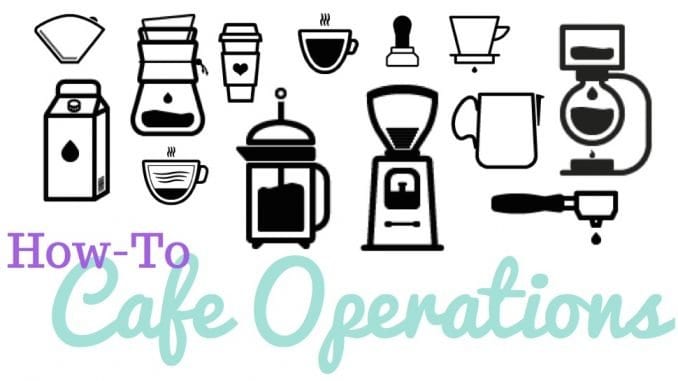
This week in my How To series, we tackle a big issue: transparency. This is the sixth installment of a multi-part series, so if you want to explore some other topics, you can find part one here, part two here, part three here, part four here, and part five here.
If I could wave a magic wand and fix a problem in a café, I think 90% of the time it’d be a spell to make things more transparent. Transparency is key at every single stage of the coffee industry, and while we seem to have a firm grasp on that concept for coffees when they’re being grown, we don’t have a good idea of what that looks like in the café.
Transparency sounds easy, but it takes a fair amount of planning and a bit of soul-searching for the goals and mission of your café. For this edition of my How To series, I’ll pick some critical moments in the hiring, training, employment, and even firing where transparency will help make a more positive and productive environment.
HIRING
I’ve talked before about how hiring with clear expectations and set goals is important to produce a happier and more functional workplace. However, I’d like to dive a little deeper into what systems you should have in place before you begin hiring staff members.
First off, you should have clear standards on how much you will pay baristas based on their experience. Maybe even create a checklist of standards that if an employee has achieved (like going to barista camp or earning a leadership position at their last job) they can garner higher wages. Pay rates shouldn’t be arbitrary, and by creating a transparent system at the beginning you set yourself and your baristas up for measured and predictable pay increases.
TRAINING
Again, think of training as a checklist ”there are certain things a barista must know how to do before they are given certain shifts or before they’re allowed to work by themselves.
An assumption that I tend to make is that people will figure things out, which isn’t always true. That’s not a knock on anyone’s abilities, but what I assume to be easy or intuitive is only that way to me because I’ve been doing it for months. Having some sort of training manual that outlines everything you want a barista to know ”recipes, drink standards, how to change a water filter ”is an incredibly powerful tool and removes some of the managing burden off leaders.
I also encourage baristas to self-assess; I tell them that they know themselves better than I do, and if they want to do another training shift or if they think they’re ready, then I trust them. Remember, you want your trainees to both be successful and feel that you trust them to be successful, so make sure they have every available tool but don’t feel that you have to be there to watch them at every turn.
EMPLOYMENT
One thing I try to set up my baristas for is constant feedback. I try to be transparent immediately about this for two reasons:
ONE: I don’t want baristas to feel that the feedback I’m giving is negative. It’s not ”it’s meant to help them improve. I set that expectation up in the beginning, and it makes the process of receiving feedback much more pleasant, and opens up baristas to give me feedback as well.
TWO: People don’t want to do a bad job, and if someone is doing a bad job, I can pretty much assure you they have no clue. It isn’t fair to a barista to get mad at them if they don’t know what they’re doing wrong. Most employers do tell baristas about their performance, but it’s usually at specific intervals like three month check ins (which you should still do anyway). You should give feedback within 48 hours, and if you forget to do so, then it’s not important. Let it go.
FIRING
Firings should never be a surprise unless someone is caught doing something dishonest. If you’re transparent and open with baristas, a firing should be the result of behaviors that have been addressed, but continue to go uncorrected. At one of my very first jobs, a girl I worked with was constantly late, and was given a ˜three strikes’ deal regarding her tardiness ”and she knew on the third day she came in late that she was going to be let go after her shift. She was upset, but she wasn’t angry and it made the firing really easy.
Conversely, I’ve heard from many baristas who have been let go recently and have no idea why. That’s simply unfair and doesn’t give baristas the chance to respond or correct their behaviors. Again, people want to be good at their jobs, and being fired is the complete opposite of that, so through consistent, clear guidelines, you’ll likely not have to fire any one on your staff ”they’ll correct their behaviors on their own.
Some of this seems childish. I admit most of the lessons I learned are from teaching and setting standards for middle schoolers, back before my coffee life as a public school teacher. But, these guidelines pave the way for clear and easy communication that allows for fairness to reign supreme. Without fairness in hiring, wage, and operations standards, resentment begins to build.
Next week, we’re gonna get back to some real basics: I’m going to walk you through the fastest way to count a register.

